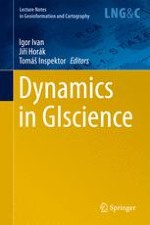2018 | OriginalPaper | Buchkapitel
Prediction Models for Landscape Development in GIS
verfasst von : Chukwudi Nwaogu, Antonín Benc, Vilem Pechanec
Erschienen in: Dynamics in GIscience
Aktivieren Sie unsere intelligente Suche, um passende Fachinhalte oder Patente zu finden.
Wählen Sie Textabschnitte aus um mit Künstlicher Intelligenz passenden Patente zu finden. powered by
Markieren Sie Textabschnitte, um KI-gestützt weitere passende Inhalte zu finden. powered by
